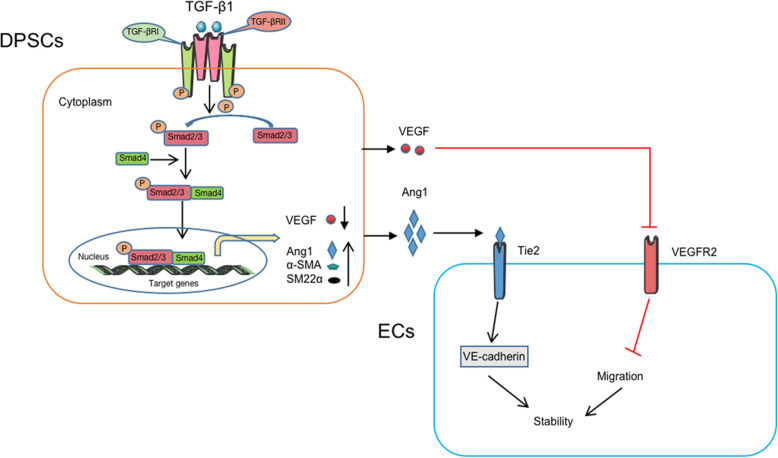Fig. 9.
The proposed molecular mechanism on how TGF-β1 regulate the role of DPSCs in vascular stabilization. TGF-β1 treatment activated Smad2 and Smad3 via phosphorylation, and the activated Smad2 and Smad3 associated with Smad4 regulated Ang1 and VEGF expression besides α-SMA, SM22α. After secretion, Ang1 derived from DPSCs activated its receptor, Tie2, on the HUVEC membrane surface. The activated Ang1/Tie2 promoted VE-Cadherin expression, enhancing cell-cell adhesion and blood vessel stability. The secreted VEGF from DPSCs decreased gradually as DPSCs differentiated into pericyte-like cells, which in turn attenuated VEGF/VEGFR2 signaling, inhibiting HUVEC migration

